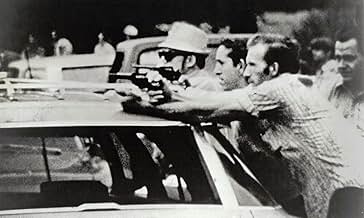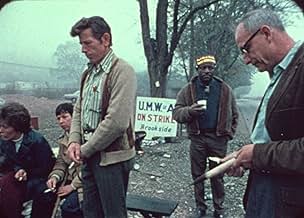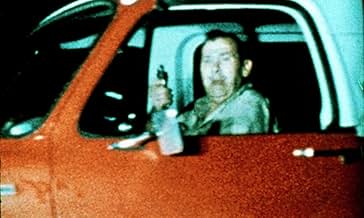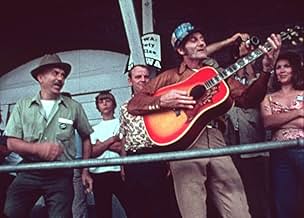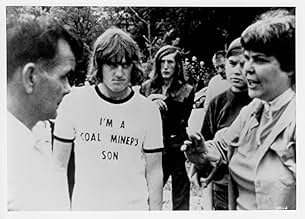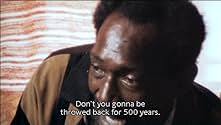Eine erschütternde Aufzeichnung des dreizehnmonatigen Kampfes zwischen einer Gemeinschaft, die ums Überleben kämpft, und einem Unternehmen, das sich dem Endergebnis verschrieben hat.Eine erschütternde Aufzeichnung des dreizehnmonatigen Kampfes zwischen einer Gemeinschaft, die ums Überleben kämpft, und einem Unternehmen, das sich dem Endergebnis verschrieben hat.Eine erschütternde Aufzeichnung des dreizehnmonatigen Kampfes zwischen einer Gemeinschaft, die ums Überleben kämpft, und einem Unternehmen, das sich dem Endergebnis verschrieben hat.
- 1 Oscar gewonnen
- 9 Gewinne & 1 Nominierung insgesamt
- Self - Pres., UMW, 1920-1960
- (Archivfilmmaterial)
- Self - Black Ling Clinic., W. Va
- (as Dr. Donald Rasmussen)
- Self
- (as Dr. Hawley Wells Jr.)
- Self - Pres., UMW, 1962-1972
- (Archivfilmmaterial)
- Self
- (Archivfilmmaterial)
- (as Joseph "Jock" Yablonski)
- Self - Mine Foreman
- (as Basil Collins)
Empfohlene Bewertungen
I can't believe it was so recently that companies were hiring brutal men to terrorize their workers over money.
The movie is set in Harlan County, and there is not much to say but that you are watching history unfold, with all of it's rage and fire, and bloodshed, tears and strength.
Nothing is hidden and it is very powerful. People willing to die for what they believe in, it is very eye opening. The people were real, fearless, and their struggle raw.
There are real villains here, the gun toting hired thugs, and the company who seems OK with the way things are handled. Murdering poor people over a few cents and common sense benefits. Sad.
The most poignant memory of the film for me was how they tricked a truly injured man into coming back to the work site so that they could deny him worker's comp. Quite shocking.
The miners and the picketers are captured via a well-maintained cinema verite style to the point that much of the early dialogue in the film is indiscernible and lingers there only as a means to introduce the tone. Music plays a key role in the emotional impact of this gritty film as well. Considering it takes place in the Bluegrass State, it comes as no surprise that so many of the most intense moments in the film carry with them a heart-wrenching rendition of roots music, most of which pertain specifically to coal mining.
"Harlan County USA" removes the presumptions that such human atrocities are far gone memories of America's past, and would pave the way for other important pro-workers rights films as "Norma Rae", "Silkwood", and "Matewan".
This documentary was filmed over a period of 4 years which in turn showed the lack of speed for a change from a peon work ethic to one of equality. The men of the mine saw the results that a union in other parts of the country and the standard of living that most Americans enjoyed as compared to their own situation. The community of Harlan County had a desire for change from an almost forced labor to one where the worker could make choices, have health care and to not live from pay check to pay check. The men and the woman were willing to risk everything for a better future for their children. The wives of the minors not only lived in the same conditions but had the same drive for changes and a difference. The women not only increased the numbers for picket lines but they also brought the importance of the strike to an `at home' feel. The rough terrain, harsh living community, and dirty, dingy way of life that a miner and a miner's family lived in was adequately represented in the film via the raw nature of the interviews and the in the field live spontaneous coverage. You as the viewer did not sit back and watch the film but instead were brought in to the lives of these men and woman. The filming brought a sense to the audience that you were there on the picket line, you felt the terror of being attacked, and you experienced the chaos when shots were fired at unarmed citizens. The falling of the camera and the blackness of the shot exemplifies the nature of not understanding what was going on at that moment. This in your face type of filming also show all aspects of what a strike of this nature entails. The viewer saw the aftermath and hospitalization of the battles between unarmed men and the `gun -thugs' sent to end picket lines. Like Bordwall and Thompson state the film crew used was small and more mobile, this not only rejected the traditional ideals of script and structure but also allowed the film makers to almost disappear into the back ground and let the action unfold in font of their eyes. This form of filming were there is a no holds bar or in your face tactic shows all portions of the incident, meaning that there is a feeling that the camera was never turned off. It brought light to a subject that most would not have known about, a subject that it profoundly influenced. The press that such documentaries bring to these hidden incidents carries a strong level of change and importance that otherwise would not be there. The filming of these events is intense. The film must express the telling of a complete story, one that ties the events that previously unfolded through the elapsed filming time to a coherent ending, being it either good or bad. The documentary film is a modern day form of passing on a lesson or an experience to a new audience, the modern day word of mouth story telling.
Wusstest du schon
- WissenswertesWhen filming began, the film was intended to be about the 1972 campaign by Arnold Miller and Miners For Democracy to unseat UMWA president Tony Boyle, in the aftermath of Joseph Yablonski's murder; however, the Harlan County strike began and caused the filmmakers to change their principal subject, with the campaign and murder becoming secondary subjects.
- Zitate
Hawley Wells Jr.: [...] that was when I learned my first real political lesson, about what happens when you take a position against the coal operators, against the capitalists... I found out that the union officials were working with the coal companies. I also found that the Catholic hierarchy was working with the coal companies. Here was a combination of the whole thing, you see: you had to bump against the whole combination of them.
- VerbindungenFeatured in Cinéma Vérité: Defining the Moment (1999)
Top-Auswahl
- How long is Harlan County U.S.A.?Powered by Alexa
Details
- Erscheinungsdatum
- Herkunftsland
- Offizieller Standort
- Sprache
- Auch bekannt als
- Harlan County, USA
- Drehorte
- Produktionsfirma
- Weitere beteiligte Unternehmen bei IMDbPro anzeigen


